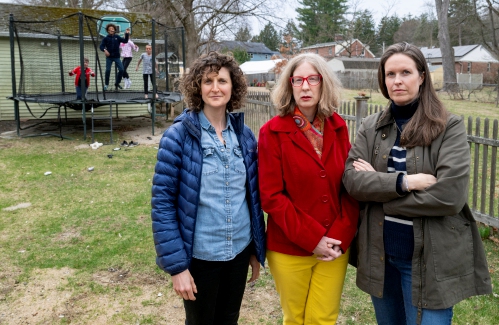
New group, ReConnect Western Mass, takes aim at smartphones in schools, social media use among youth
NORTHAMPTON — As the movement to ban smartphones in schools gains momentum in the state, a new group of local parents and educators has been formed to highlight the dangers kids are facing from the devices, as well as to advocate for school policies and state laws around youth smartphone access.
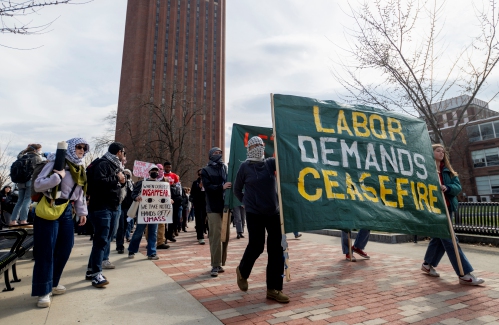
‘Hands off our students now’: 100 at pro-Palestinian rally demand improved protections for internationals, divestment from Israel
AMHERST — Chanting “hands off our students now” and “up, up with liberation, down, down with deportation” more than 100 students, staff and faculty at the University of Massachusetts, participating in a pro-Palestinian rally and march Thursday afternoon, demanded both divestment from Israel and improved protections for international students, including those whose visas are being revoked.
Most Read
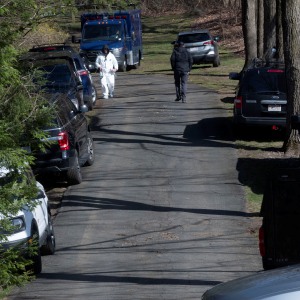 FBI conducts court-authorized investigation at Hockanum Road home in Hadley
FBI conducts court-authorized investigation at Hockanum Road home in Hadley
 Area property deed transfers, April 11
Area property deed transfers, April 11
 Amherst Town Council calls emergency meeting to consider rescinding funds for Jones Library project
Amherst Town Council calls emergency meeting to consider rescinding funds for Jones Library project
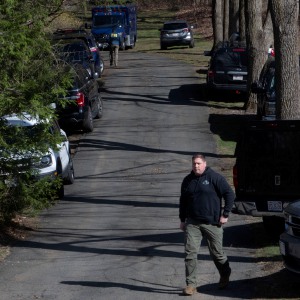 Hadley man arrested on firearms, ammunition charges after FBI searches home
Hadley man arrested on firearms, ammunition charges after FBI searches home
 Amherst launches red card campaign for immigrant rights
Amherst launches red card campaign for immigrant rights
 Northampton Police search for suspect in water pellet shooting
Northampton Police search for suspect in water pellet shooting
Editors Picks
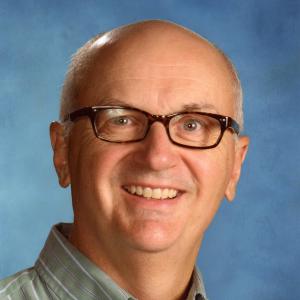 A Look Back, April 12
A Look Back, April 12
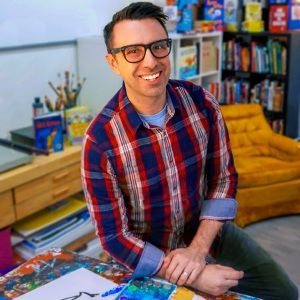 Creativity empowers kids: Inaugural R.I.S.E. Fest is next weekend in Northampton
Creativity empowers kids: Inaugural R.I.S.E. Fest is next weekend in Northampton
 Arts Briefs: Classical at UMass, singer-songwriter in Easthampton, and more
Arts Briefs: Classical at UMass, singer-songwriter in Easthampton, and more
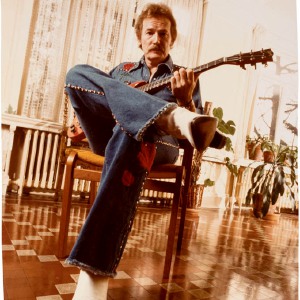 The legend lives on: The Lightfoot Band brings the music of their late bandleader to the Iron Horse
The legend lives on: The Lightfoot Band brings the music of their late bandleader to the Iron Horse
Sports
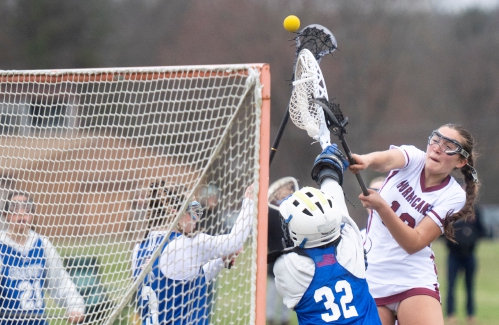
Girls lacrosse: Kiko Bhowmik, Amherst hold off Granby 14-11 (PHOTOS)
GRANBY – Kiko Bhowmik was the offensive catalyst for the Amherst girls lacrosse team, as the junior attacker scored five goals and added an assist to finish as Amherst’s top point producer in a 14-11 victory over Granby on a cold and raw afternoon Friday.
Opinion

Naomi Tannen: DEI makes America great
How did it happen that diversity, equity and inclusion became a mark of being anti-American and a reason to withhold funding from business and educational institutions? I thought that these three values were the bedrock of what makes America great. We have always been proud of the Statue of Liberty with its inscription “give me your tired, your poor, your huddled masses yearning to be free.” All the major religions support the concept of welcoming the stranger.
 Guest columnist Jonathan Kahane: Who’s to blame in the art of persuasion?
Guest columnist Jonathan Kahane: Who’s to blame in the art of persuasion?
 Sam Masinter: Be wary of easy answers to school budget problems
Sam Masinter: Be wary of easy answers to school budget problems

Your Daily Puzzles

An approachable redesign to a classic. Explore our "hints."

A quick daily flip. Finally, someone cracked the code on digital jigsaw puzzles.

Chess but with chaos: Every day is a unique, wacky board.

Word search but as a strategy game. Clearing the board feels really good.

Align the letters in just the right way to spell a word. And then more words.
Business

With $402K grant, South Deerfield company with focus on supercapacitors poised to expand
SOUTH DEERFIELD — Over the last year, an energy storage solutions research and development company focusing on supercapacitors has been settling into its new facility off of Routes 5 and 10.
 Area property deed transfers, April 11
Area property deed transfers, April 11
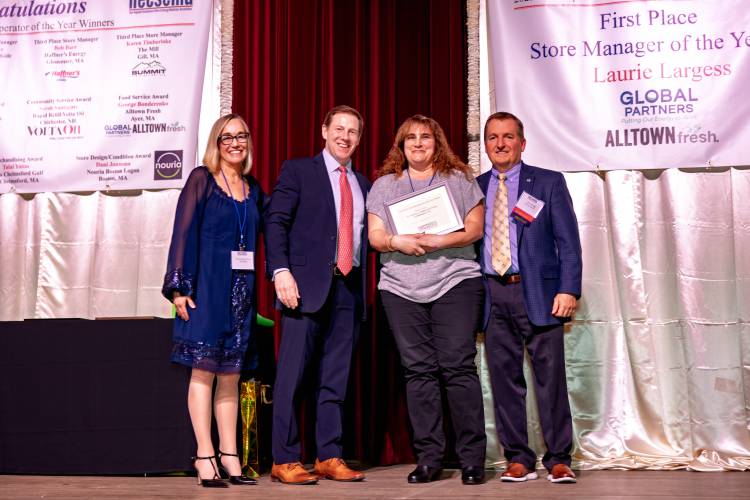 Making News in Business, April 11
Making News in Business, April 11
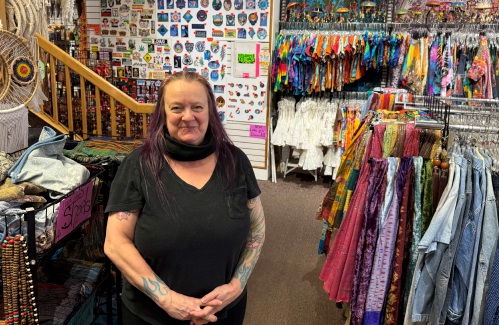 Long-vacant former Faces spot in Northampton gets new tenant
Long-vacant former Faces spot in Northampton gets new tenant
Arts & Life
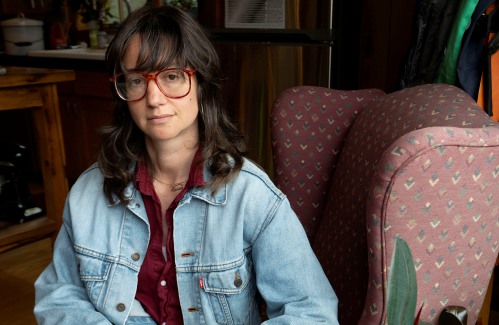
The cost of addiction: New novel draws on Valley backdrop to explore how substance use upends people’s lives
Several years ago, Mattea Kramer, an Amherst writer and researcher who’s studied and written about the federal budget as well as drug policies at state and federal levels, spent time interviewing a number of women in the Greenfield jail who were part of a recovery program for substance use.
Obituaries
 Michael W. Romanowski
Michael W. Romanowski
MIDDLEFIELD, MA - Michael W. Romanowski, 67 of Middlefield passed away unexpectedly on Monday April 7, 2025, with his life partner, Lucy Miller, at his side. Michael was born in Northampton, a son of the late Thadius Romanowski. He leav... remainder of obit for Michael W. Romanowski
 Sandra M. Sacco
Sandra M. Sacco
Amherst, MA - Sandra (Dickinson) Sacco, 84, born November 1, 1940, passed away peacefully on April 6 with her loving family by her side. She is predeceased by her loving husband Robert (Bob). Sandy met Bob while working in the dining co... remainder of obit for Sandra M. Sacco
 Melvin Hershkowitz M.D.
Melvin Hershkowitz M.D.
Dr. Melvin Hershkowitz, M.D. Hyattsville, MD - Melvin Hershkowitz, M.D., passed away on February 16, 2025, at home in Hyattsville, MD, surrounded by two of his grandchildren and his son Paul. He was 102 years old. Melvin was born in New ... remainder of obit for Melvin Hershkowitz M.D.
 Mary Goulet
Mary Goulet
[IMAGE]Mary Goulet Easthampton, MA - Mary passed away peacefully surrounded by her loving family on April 8th at Baystate Medical Center. Her family would like to thank the Baystate staff for their compassionate care. Born Mary Louise S... remainder of obit for Mary Goulet


 Belchertown Select Board lowers Proposition 2½ override request to $2.9M
Belchertown Select Board lowers Proposition 2½ override request to $2.9M
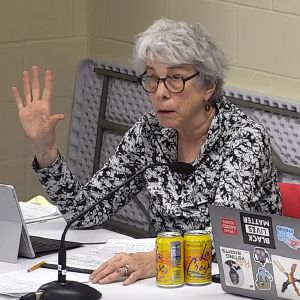 Northampton School Committee backs ‘strong’ budget, while acknowledging they likely won’t get it
Northampton School Committee backs ‘strong’ budget, while acknowledging they likely won’t get it
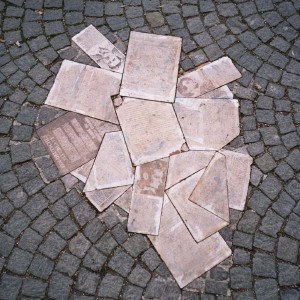 Guest columnist John Paradis: White Rose legacy transcends, inspires
Guest columnist John Paradis: White Rose legacy transcends, inspires
 ‘Stay the course’: Amid uncertain stock market, Valley financial experts are telling their clients to have a plan, stick to it
‘Stay the course’: Amid uncertain stock market, Valley financial experts are telling their clients to have a plan, stick to it
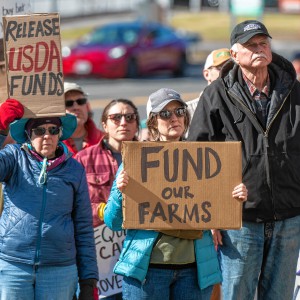 Guest columnist U.S. Sen. Edward J. Markey: Fighting for our farmers
Guest columnist U.S. Sen. Edward J. Markey: Fighting for our farmers
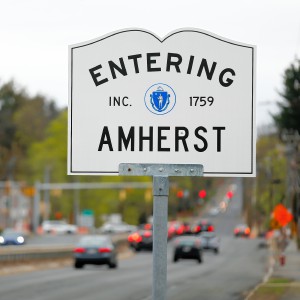 Amherst Town Council approves University Drive overlay district
Amherst Town Council approves University Drive overlay district
 Fiber internet project moving along in Easthampton
Fiber internet project moving along in Easthampton
 Girls lacrosse: South Hadley’s Ava Asselin notches 100th point in win over Belchertown (PHOTOS)
Girls lacrosse: South Hadley’s Ava Asselin notches 100th point in win over Belchertown (PHOTOS)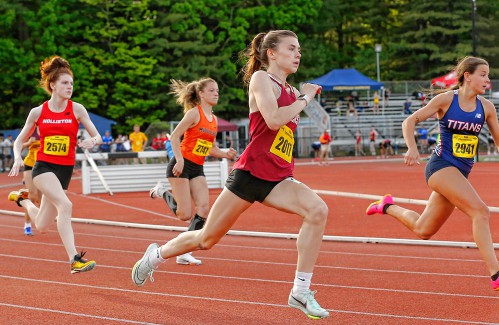 HS Track Preview 2025: Amherst returns state champions in Alfandari, Luetjen
HS Track Preview 2025: Amherst returns state champions in Alfandari, Luetjen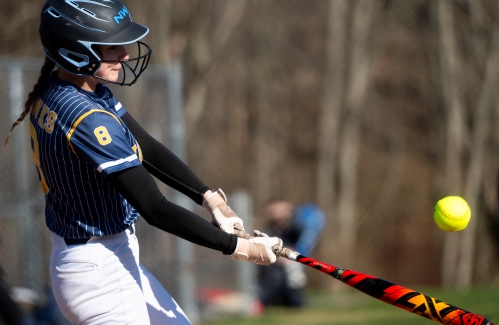 High school roundup: Alayna Bailey's HR helps Hopkins Academy take down Northampton (PHOTOS)
High school roundup: Alayna Bailey's HR helps Hopkins Academy take down Northampton (PHOTOS) UMass basketball: Daniel Rivera joins list of Minutemen entering transfer portal
UMass basketball: Daniel Rivera joins list of Minutemen entering transfer portal Karen Traub: What to do when tax dollars fund millionaire golf games instead of libraries
Karen Traub: What to do when tax dollars fund millionaire golf games instead of libraries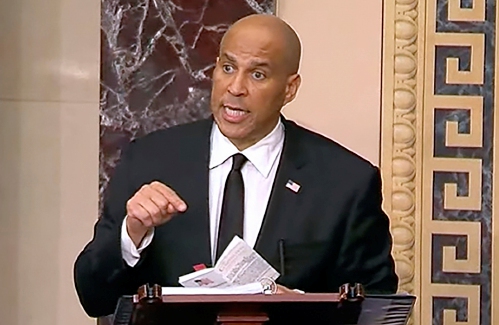 Columnist Olin Rose-Bardawil: Cory Booker speech an authentic American moment
Columnist Olin Rose-Bardawil: Cory Booker speech an authentic American moment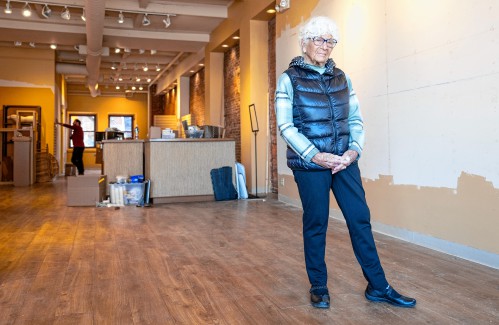 ‘Delightful’ Northampton store shopping guide Jane Hertz, 88, seeking next gig
‘Delightful’ Northampton store shopping guide Jane Hertz, 88, seeking next gig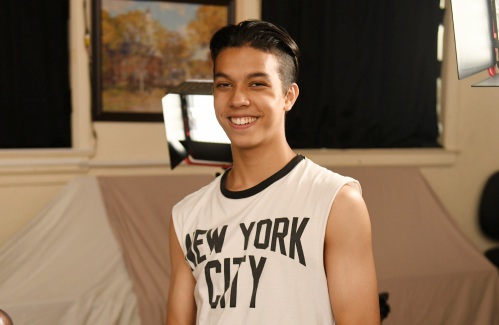 Young filmmaker makes his debut: 16-year-old director and writer to screen his film at Greenfield Garden Cinemas
Young filmmaker makes his debut: 16-year-old director and writer to screen his film at Greenfield Garden Cinemas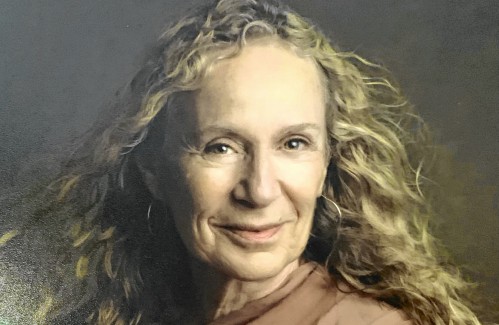 Let’s Talk Relationships: Uncovering the roots of negative self-talk: What you say to yourself echoes in your relationships
Let’s Talk Relationships: Uncovering the roots of negative self-talk: What you say to yourself echoes in your relationships ‘We’re here! We’re queer! We’re ready to cheer!’: New queerleading team hopes to perform at queer sporting events in the Valley
‘We’re here! We’re queer! We’re ready to cheer!’: New queerleading team hopes to perform at queer sporting events in the Valley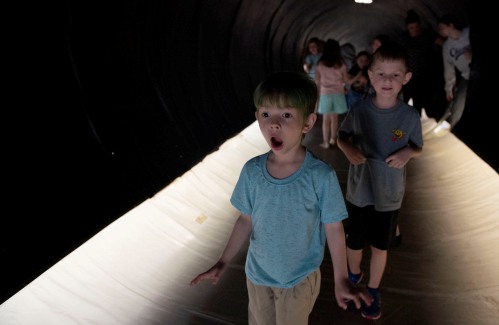 ‘Spaces that allow the imagination to be fully realized’: 33 Hawley hosts two fundraising events this month
‘Spaces that allow the imagination to be fully realized’: 33 Hawley hosts two fundraising events this month
